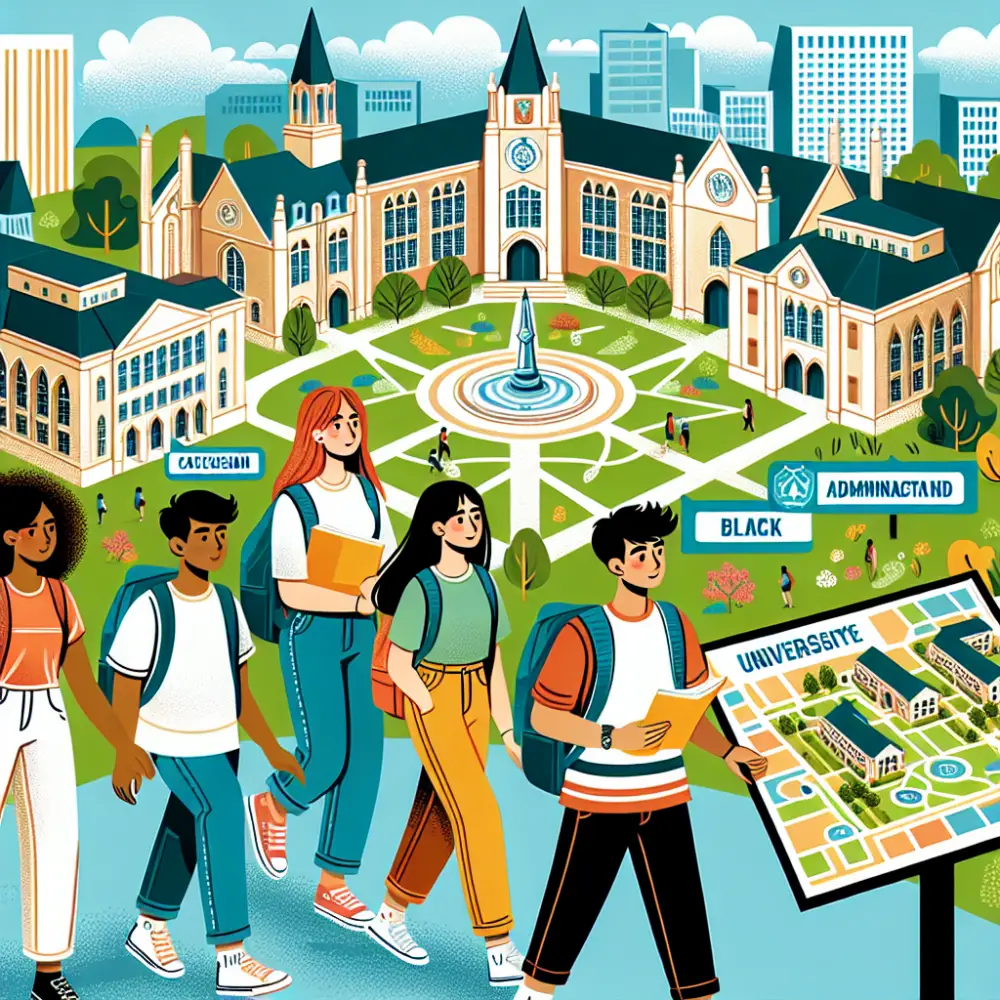
What is the elimination process like when it comes to applying for college? Maybe the one thing a lot of articles do not reference about is the declining process that someone may receive if they do not receive an acceptance letter to the school of their dreams. Not to crush any dreams here, it’s about facing the reality of the situation because some students can’t afford the school of their choice based on financial aid only gifting a limited amount.
What about the elimination process for students who go into the final round of being chosen or wait-listed? Top universities have a wait-list option where students who fit the criteria and were accepted will not be able to attend a college campus until the following semester.
Wait-Listed
Wait-listed is when a student receives a letter depicting that they haven’t out right been accepted to that university or college. However, in the near future that university and college have or will accept students for the following open college window timeframe. This is a type of indecisive limbo time where students need to have that back up college plan at the ready.
Wait-listed is also seen as a “not accepted” to college stance. Some students will start applying elsewhere instead of waiting a whole semester to go by before finding out if they may have been accepted in or not. Because colleges can always change their minds and decide to not accept a student based on their original application which the college wait-listed themselves. Typically, most students want to have a few backup colleges to attend to all at the same time to avoid being wait-listed at their dream university.
How to Know You Have Not Been Accepted
The tough decision is to reconcile if as a student, they have been declined at that university they wanted to attend. In 2021, most acceptance letters from colleges will arrive through e-mail. It is rare that an acceptance letter will arrive through the post (if a letter arrives from the post from a college a student does not remember applying to, this is most likely a phishing scam and do not contact any of the information given on that letter).
The big question is when to college acceptance letters normally arrive, what’s the time frame when to expect a “yes or not?” Spring is the general time most universities send out acceptance letters. This is before the new Fall freshman semester when new students will be on campus. The latest timeframe someone may hear from a college is in mid-April. Otherwise, if a student hasn’t received an acceptance letter it’s a 90% possibility, they were not acceptable.
The reason colleges cannot inform students they have been accepted past mid-April is because, those colleges have to hear by May 1st, that those students have accepted their spot at that university. A clear example is “Ivy Day.” This is the day all 8 Ivy League universities send out their acceptance letters via email or in this case prestigious colleges may use the post to send a physical letter. Ivy Day is at the end of March, check on Harvard Universities website to find the 2022 March date.
Early Acceptance or a Late Declined Invitation?
When or how does early acceptance work? Depending on the colleges that student applied to, a few offers to send out their top 40 list of chosen accepted students. This falls in the top 20% of the student body who has an outstanding amount of high school or early college credits and an extraordinary transcript. If you’re a student who knows they have some leadership skills, won awards, and currently holds in the top 20% of the student body grade average worldwide…. you will receive an early acceptance letter from the school of your choice.
Some schools will send out later acceptance invitations. It happens depending on where the university is located, if the campus is under architectural repairs or something more serious has affected the open school date.
The Rejected Letter
Being rejected from a college that was applied to has happened to more people than they would like to admit. It’s a very rare occasion when a student actually is accepted to the university of their dreams. Across all universities depicted in 2020, only 65% of students received an accepted college letter. The rest was rejected or declined submissions. Even though in the last few years more students are applying to college, that means more students are being rejected and have to fall back on a different college or take a gap year to reassess.
How Colleges Eliminate Who Can Attend and Who Can Not
The elimination process comes down to incomplete or inaccurate applications. Also, colleges look for a specific student body criteria that will fit their campus school. This means that some colleges are primarily associated on specific subject like Berkeley School of Music. If you were to go to Berkeley to become a lawyer… you may fall short on what is needed to access that type of career. That’s why Harvard University is an Ivy League university since the specific career paths are focuses on becoming a lawyer, journalist, or doctor.
Typically, most eliminations occur around the gathering period where the admissions office looks at the GPA and extracurricular activities each student has done before. Has the student tried AP college courses? If so, how is that GPA holding?
A great academic record is essential to securing that college spot. Especially if finances may not be on your side. If a student comes from a low-income household, spectacular grades will be looked at as the strong hold for this student. Those grades become the deciding factor if they are accepted or not.
Each institution has different criteria they follow when it comes to acceptance and rejection of the new applications that come in each year. This is what most colleges can reject a student from:
- The application does not hold up to the academic pressure threshold the university has set.
- If the student has a record of misbehavior or trouble at their previous schooling institution, a college will not want to take the risk and will refuse that student entry.
- If it comes down that the student’s application is incredible but that student may not be the right fit for that particular university institution. That’s why searching for the right college according to the chosen career path is crucial.
- If the university has far too much demand from too many applications, most students will be rejected simply because the university is “full of compacity.”
- If the application has too many errors. Too many typos means that the student didn’t care enough to make a near perfect application to submit. This will be seen as being lazy and not caring.
- Any missing information like test scores, an application will automatically be deemed incomplete and that student will be deemed not fit for that institution.
While the number of common mistakes can cause a student to lose a spot at their dream college, this goes for backup colleges as well.
Applying for college is no laughing or simply matter. Each student has to follow the guideline and outline each university has up on their website to a perfect copy. Doing this shows the instruction that the student is serious about their higher education, has followed the rules, and exemplifies that they intend to do their best. If there are typos, a few may be able to be over looked, but any more than 2-3 typos will be seen as not qualified.
What To Do If You’re Not Accepted to the Dream University
Facing the reality that the dream university a student applied to was outright rejected can be devastating, because most students start from a young age focused on attending that exact school. However, when a rejection does happen, those students can do a few things to readjust their life. To re-focus and look towards a different path.
The Gap Year
Students opt for this decision to just reevaluate what direction their life is going. And more importantly, where they think their life should go. A gap year can consist of taking an extended vacation for about a full year, to visit cities, travel, visit family, so the student can figure out what their next steps will be when it comes to their career field. A lot of the times when a gap year happens, students suddenly figure out that maybe their intended career path was not really for them after all. Leading to a happier career path that allows a more beneficial outlook on life.
Secondary College Acceptance
Another route that students take is applying immediately to a secondary school that initially they had not applied to before. The “back-up school” is the most used term for this. However, students find out that maybe the back-up school was really for them because of the strict regulations that are associated with ivy league institutions.
Finding a Job That Is an Entry Level to the Intended Career Field
A different bold move is that even if a student is not accepted into their dream school to enhance their career field destination. Those students will instead find an entry level job within their desired career field. For instance, veterinary hospitals have rescue centers where people can apply to be a foster or volunteer for animals in need. This allows the person to build up their resume towards becoming a veterinary assistant (there are trade schools for strictly just veterinary assistance careers).
Virtually any student can do this because all higher education jobs have an entry level position. From a doctor’s office needing a filing assistant, to an office needing a secretary. The same goes for law practices needing an individual to essentially be customer assistance.
In Other Cases, Students Attend Trade Schools
Trade schools revolves around engineering and IT in a wide range of forms. One of the best demographics who attend trade schools is individuals who are in the military and this happens because of their deploying schedule. Trade schools are specific learning instructions that focuses on handing their students a great trade skill to use out in real life. For example, individuals who wish to become an electrician and start utilizing their skills within a year, it’s possible when someone attends a trade program.
Trade programs include:
- Administration within Healthcare fields
- Disel Technology
- IT technician
- Mechanics for various styles of vehicles
- Marine Tech
- Collison Repair Engineer
- Welding
- Professional Photographer
- Culinary
- Massage Therapy
- Criminal Justice
- Business Administration
- Dental Hygiene
- Cosmetology
- HVAC/R
- CNC Machinery
There is so many options that most people don’t know exist. Anymore there is a trade school out there for a specific career field for a student they just have to do the research to find it. The plus side to a trade school certificate is that trade schools are known to be inexpensive and allow people to immediately start a fulfilling career within a year after graduating.
Universities Eliminate Qualified Students Too
This is such a common happenstance for students who end up in the cross fire when a university is full to accepted capacity. Even though we don’t think of a university being filled with students to the point that other students receive a rejection letter. However, in 2019 this happened on an average of 50% because 2019 was a high point of high school students attending or being interested in college.
No matter how qualified a student may be, if a university hits their limit supply, that means they can’t accept any more students for that school term. Students may receive a wait-listed notification and they can try again when the next Fall semester comes around. What needs to be normalized is that everyone knows or has been through a tough rejection letter that has derailed their initial plans. But that doesn’t mean a student has to stop pursuing their dream, it just means that the route has changed, not the destination.












